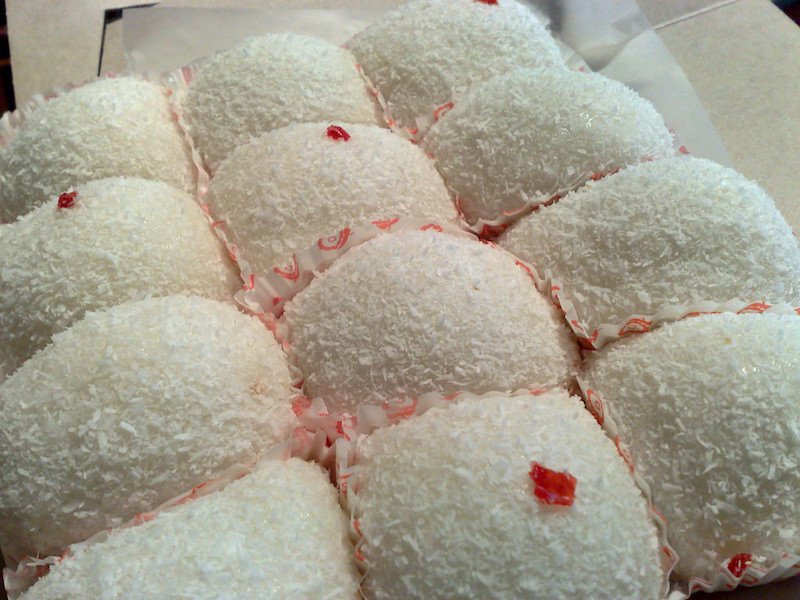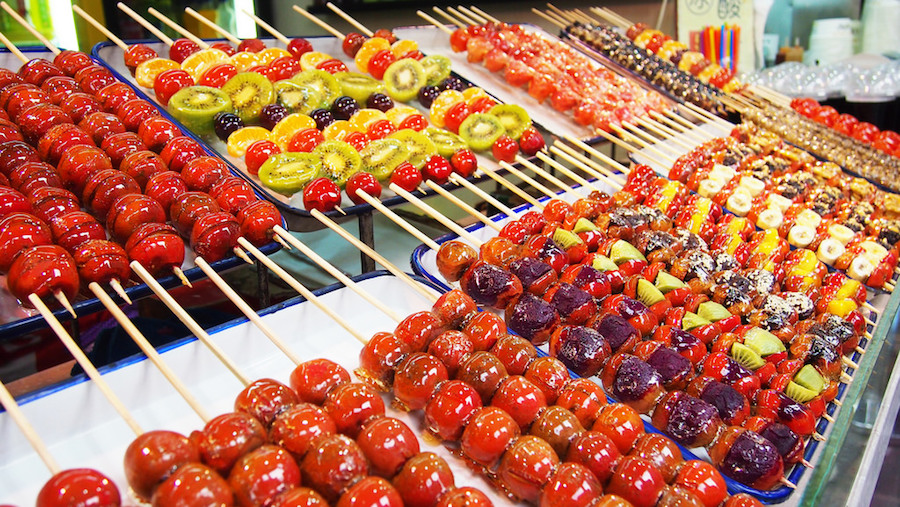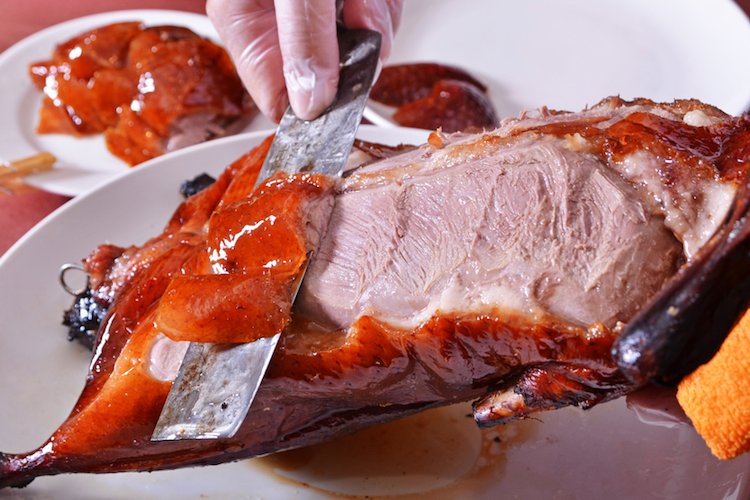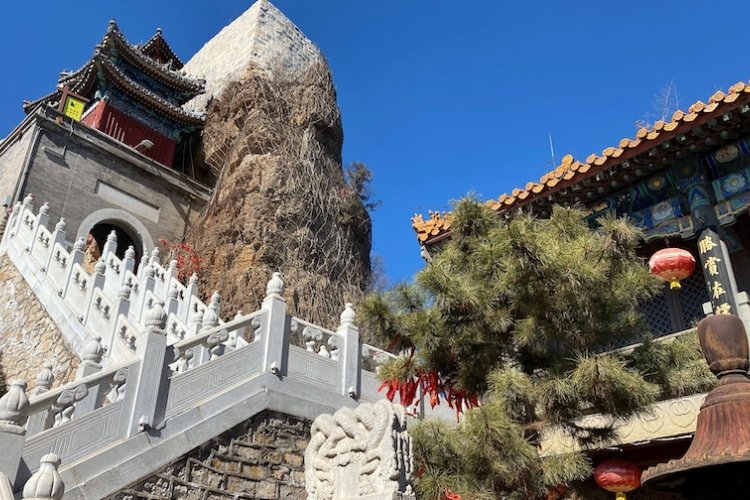Try These 5 Traditional Beijing Desserts
Chinese cuisine may not be well known for its desserts (the Lucky Peach cookbook 101 Easy Asian Recipes famously includes just two dessert "recipes," one for egg tarts and one for "fruit"), but that doesn't mean visitors to Beijing won't find anything to satisfy a sweet tooth. While not necessarily desserts in the traditional sense, the five sweet snacks below are certainly steeped in history.
Candied haws (bīngtánghúlu, 冰糖葫芦)
One of the most iconic Beijing street snacks, these glistening red morsels (pictured at the top) are traditionally a winter delicacy but can be found all year round. Literally meaning "rock sugar bottle gourd" (a reference to the shape), this teeth-testing sweet treat features fruit dipped in sugar syrup and threaded onto a long skewer – think of it as a Chinese candy apple. The most traditional version uses the fruits of the Chinese hawthorn, although nowadays vendors use everything from strawberries to kiwi.
Find it
Various vendors along Yandai Xiejie (Skewed Tobacco Pouch Street), which runs from Di'anmen Waidajie towards Houhai
西城区烟袋斜街

Beijing yogurt (lǎo běijīng suānnǎi, 老北京酸奶)
One of Beijing's most iconic street snacks, this light yogurt is a refreshing treat on a hot day. Unlike western-style yogurt, Beijing-style yogurt is made daily by heating milk, sugar, and rice wine, which is then transferred to ceramic pot to lightly ferment. The texture of yogurt is thinner than Greek yogurt and it is usually drunk with a straw, rather than eaten with a spoon. Note that if you find a stall selling yogurt in traditional ceramic containers then you'll need to consume it there on the spot and return the container to the vendor. However, many vendors now sell the yogurt in disposable plastic cups.
Find it
At any street-side convenience store!

Pea cake (wāndòu huáng, 豌豆黄)
Somewhat of an acquired taste, these smooth textured cakes are made from mashed split peas. The peas are mixed with sugar and then cooked until a thick puree forms, giving them a melt in the mouth texture that can be (very tenuously) likened to fudge. Pea cakes were supposedly a favorite of empress dowager Cixi.
Find it
Xiaodiao Litang, 4A Baijiazhuang Dongli (southeast of Tuanjiehu subway station exit C), Chaoyang District (6582 1348)
小吊梨汤:朝阳区白家庄东里甲4号

Àiwōwo (艾窝窝)
These snow-white steamed glutinous rice balls first appeared in the Yuan dynasty (1279-1368) and remained a popular snack in the Ming and Wing imperial courts. They always have a sweet filling but that filling might be made with anything from red bean paste to mashed Chinese dates to hawthorn. Fans of Japanese mochi may find they enjoy aiwowo.
Find it
Huguosi Snack Shop: 93 Huguosi Dajie, Xicheng District (8328 1700)
护国寺小吃店:西城区护国寺大街93号

Rolling donkeys (lǘ dǎgǔn, 驴打滚)
Before you recoil in horror at the idea of eating sweetened donkey meat, you can be reassured that these snacks don't have anything to do with actual donkeys. The name comes from the fact that these glutinous rice rolls are rolled in soybean flour before serving and are said to resemble a donkey rolling in the dust. Lvdagun are usually filled with red bean paste and should be sticky in texture and only slightly sweet.
Find it
Old Beijing Lvdagun, Old Beijing Folk Custom Street, west of Wangfujing Snack Street, Wangfujing Dajie, Dongcheng District
老北京驴打滚:东城区王府井大街小吃一条街老北京风情街
More stories by this author here.
Instagram: @gongbaobeijing
Twitter: @gongbaobeijing
Weibo: @宫保北京
Photos: Wikimedia, Flickr (Joni Cong), Dianping, Flickr (Faungg), Flickr (松林 L)







